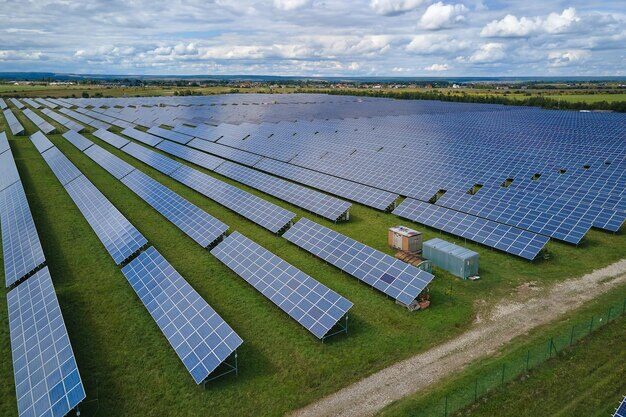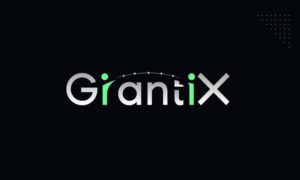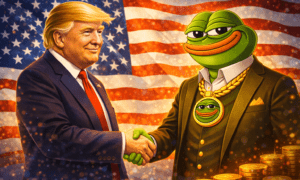Curitiba, Brazil, has long been recognized as a global leader in sustainable urban planning. From its innovative bus rapid transit system to its extensive green spaces, the city has built a reputation for thinking ahead. Now, it’s setting its sights on a new challenge—rolling out rooftop solar panels across homes, schools, hospitals, and public buildings.
The potential benefits are clear: lower energy costs, reduced carbon emissions, and greater energy independence. Yet, as with many ambitious climate projects, the biggest obstacle is funding. Traditional financing methods often fail to provide the speed, inclusivity, and flexibility needed to turn such visions into reality.
This is where tokenized green bonds, powered by blockchain technology, could offer a game-changing solution.
The Challenge: Funding the Green Transition
Cities worldwide are under increasing pressure to reduce emissions and shift toward renewable energy. For Curitiba, rooftop solar represents a low-hanging fruit in the fight against climate change—it’s proven technology, has predictable returns, and can be deployed relatively quickly.
However, conventional green finance—such as large municipal bonds or bank loans—comes with serious limitations:
- High Entry Barriers – Traditional bonds often require large minimum investments, excluding smaller investors and local citizens.
- Slow Processes – Bureaucratic approval systems can delay projects by months or even years.
- Limited Transparency – Tracking how funds are spent and what progress is made is often difficult for the public.
- Restricted Investor Pool – Local projects are usually financed by domestic investors only, missing out on potential international backers.
These barriers mean that even projects with clear economic and environmental benefits can stall simply because they lack flexible funding tools.
What Are Tokenized Green Bonds?
A tokenized green bond is a digital version of a traditional green bond, recorded on a blockchain. It’s designed to raise money for projects that have measurable environmental benefits—such as Curitiba’s rooftop solar initiative—but in a way that’s more transparent, inclusive, and efficient.
Here’s how tokenized green bonds stand out:
- Fractional Ownership – The total bond is broken into small digital tokens. Instead of needing thousands of euros to participate, someone could invest with as little as €100.
- Smart Contracts – These self-executing digital agreements handle payouts, interest payments, and compliance automatically, cutting down on paperwork and delays.
- Global Accessibility – Because they are blockchain-based, investors from around the world can contribute without complex cross-border processes.
- Transparency by Design – Every transaction is recorded on the blockchain, so investors can verify exactly where funds are going and how the project is progressing.
As explained in How Tokenized Green Bonds Could Power Curitiba’s Rooftop-Solar Plan, this approach could unlock funding in weeks rather than months—crucial for climate goals that can’t wait.
How Curitiba Could Use Tokenized Bonds for Solar Power
Let’s imagine Curitiba creating a Special Purpose Vehicle (SPV)—a legal entity set up just to manage the solar project. This SPV would issue tokenized green bonds worth, for example, €90 million.
Here’s the step-by-step vision:
Step 1 – Issuing the Tokens
The SPV divides the total bond into small digital tokens, each priced affordably to attract both local residents and global investors.
Step 2 – Funding Solar Installations
Money raised from token sales goes directly to purchasing and installing solar panels on schools, hospitals, municipal offices, and private homes.
Step 3 – Generating Returns
Once the solar panels start producing electricity, the city saves money on its energy bills and can sell surplus energy back to the grid.
Step 4 – Distributing Payouts
These savings and sales revenues are distributed to investors automatically through blockchain-based smart contracts, ensuring fast, accurate payments.
This structure means no drawn-out bank negotiations, no excessive paperwork, and a much larger base of supporters who can proudly say they helped finance their city’s clean energy future.
Why Curitiba Is Perfect for This Model
Curitiba isn’t just another city—it’s a place with a proven track record in sustainable innovation. Several factors make it an ideal candidate for a tokenized green bond program:
- Abundant Sunshine – The city has strong solar potential, ensuring high energy output and a good return on investment.
- Environmental Commitment – The local government and citizens are already engaged in eco-friendly policies.
- Financial Innovation Mindset – Curitiba has historically embraced forward-thinking solutions in transport, waste management, and urban planning.
Combining this local readiness with blockchain-enabled financing could make Curitiba a global case study for urban climate action.
The Wider Impact: From Curitiba to the World
If Curitiba proves that tokenized green bonds work at a city scale, it could inspire similar projects worldwide. Imagine:
- Small Towns Funding Big Projects – Communities without access to large capital markets could still fund renewable energy installations.
- Global Citizen Participation – Anyone, anywhere, could help finance solar panels in another country and earn returns while fighting climate change.
- Reduced Greenwashing – With blockchain transparency, there’s no hiding where the money goes—investors can see the real environmental impact.
For more detailed insights into real asset tokenization and sustainable finance models, you can explore the Tokenizer.Estate blog.
Addressing the Challenges
Of course, tokenized green bonds aren’t without obstacles:
- Regulatory Approval – Securities laws vary by country, so legal frameworks need to adapt to digital bonds.
- Technology Confidence – Both issuers and investors need assurance that blockchain systems are secure and reliable.
- Public Education – People need to understand how tokenized investments work before they feel comfortable participating.
However, with collaboration between governments, fintech companies, and community organizations, these challenges can be overcome.
The Future of Urban Climate Finance
Tokenized green bonds represent more than just a clever financing tool—they are a bridge between climate ambition and real-world action. By removing investment barriers, ensuring transparency, and enabling global participation, they could help cities like Curitiba move faster toward their sustainability targets.
FAQs – Tokenized Green Bonds & Curitiba’s Rooftop Solar Vision
- How are tokenized green bonds different from traditional green bonds?
Tokenized green bonds are issued on blockchain, allowing them to be split into small, affordable tokens. They offer transparent tracking of funds and use smart contracts to automate interest payments, making the process faster and more efficient than conventional bonds.
- How could they fund Curitiba’s rooftop solar project?
Curitiba could set up a Special Purpose Vehicle (SPV) to issue low-cost digital tokens to investors worldwide. The funds would pay for solar panel installations, and returns to investors would come from the city’s energy savings and electricity sold back to the grid.
- Why is Curitiba ideal for this financing model?
The city has abundant sunlight, strong public support for sustainability, and a proven record of innovative urban policies. These factors make it an excellent candidate for testing blockchain-based climate financing.
- Who can invest in tokenized green bonds?
Because tokens can be bought in small amounts, anyone—from local citizens to global investors—can participate, making green investment more inclusive.
- What benefits would this bring to Curitiba?
It would speed up funding, attract both local and international backers, increase transparency, and help the city reach its renewable energy targets faster.



































